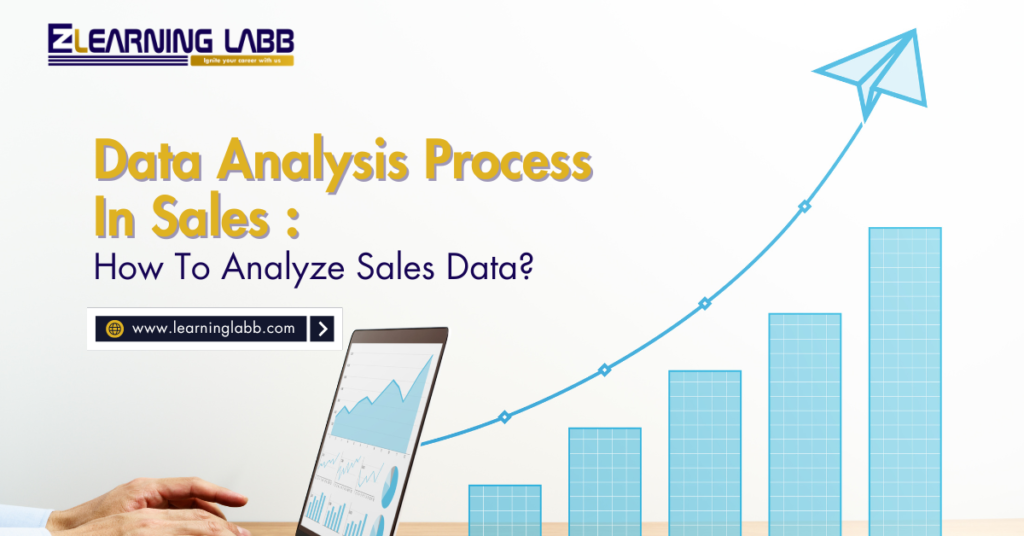Data Analysis Process In Sales: Data is everything – data makes up everything – therefore, understanding data is fundamental and integral. Organisations around the world rely on the data analysis process in sales to make informed decisions, boost revenue, and stay ahead of the competition.
In sales, data analysis can help companies can identify trends, predict future sales, and make informed decisions to boost their revenue – how awesome is that, right?
This article contains the following:
- What Is The Data Analysis Process In Sales?
- How To Analyze Sales Data?
- What Are The Different Sales Data Analysis Techniques?
What Is The Data Analysis Process In Sales?
In simple terms, the data analysis process in sales involves collecting, processing, and interpreting sales data to gain insights that can inform business strategies. It’s all about turning raw data into valuable information that can help drive sales performance and improve overall business efficiency.
But what is the data analysis process in sales, exactly? It includes several key steps, and they are as follows:
- Data collection: Gathering data from various sources such as CRM systems, sales transactions, customer feedback, and market research.
- Data cleaning: Ensuring the data is accurate and free from errors or duplicates.
- Data analysis: Using statistical tools and software to analyze the data.
- Data cannibalization: No no, not that cannibalism. In the sales perspective, cannibalization rate refers to the extent to which sales of a new product or service reduce the sales of an existing product or service within the same company or product line. It is calculated by comparing the sales or revenue of the existing product before and after the introduction of the new product.
- Data interpretation: Drawing insights and making sense of the analyzed data.
- Reporting: Presenting the findings in a clear and actionable manner.
- Action: Implementing strategies based on the insights gained.
Sales data analysis can include various types of data such as transaction history, customer demographics, product performance, and more. Analyzing this data systematically can help businesses to uncover patterns and trends that might not be immediately obvious.

How To Analyze Sales Data? 8 Steps To Follow!
Analyzing sales data may sound complex and tasking – but knowing how to analyze sales data is essential for making informed business decisions. But let us, at Ze Learning Labb, help you on how to get started:
- Define your goals: What do you want to achieve with your sales data analysis? It could be identifying top-selling products, understanding customer behavior, or forecasting future sales.
- Collect relevant data: Gather data from your sales records, CRM systems, social media, and other relevant sources.
- Clean your data: Remove any inaccuracies, duplicates, or irrelevant information to ensure your data is reliable.
- Choose the right tools: Use software like Excel, Google Analytics, or specialized data analysis tools to process and analyze your data.
- Choose metrics: Decide on the key performance indicators (KPIs) you want to track. Common sales metrics include total sales, average transaction value, conversion rates, and customer acquisition costs.
- Analyze the data: Look for patterns, trends, and correlations in your data. Use charts, graphs, and other visualization tools to help understand the data better.
- Interpret the results: What do the patterns and trends tell you about your sales performance? Use these insights to make strategic decisions.
- Act on your findings and make decisions: Implement changes based on your analysis to improve sales performance.
What Are The Different Sales Data Analysis Techniques?
There are several techniques you can use in the data analysis process in sales to gain valuable insights that can help drive growth and overall success. Below are some of the most commonly applied sales data analysis techniques:
1. Descriptive analysis: This technique involves summarizing historical data to understand what has happened in the past. It includes generating reports, charts, and dashboards that provide an overview of sales performance.
2. Predictive analysis: This technique uses historical data to predict future sales trends. It involves statistical modeling and machine learning algorithms to forecast sales and identify potential opportunities or risks.
3. Prescriptive analysis: This goes a step further by providing recommendations on what actions to take based on the data analysis. It helps businesses make informed decisions to optimize their sales strategies.
4. Customer segmentation: This technique involves dividing customers into different groups based on certain characteristics such as demographics, buying behavior, or purchase history. It helps businesses target specific customer segments with personalized marketing campaigns.
5. Sales funnel analysis: This involves analyzing the stages of the sales process to identify bottlenecks and improve conversion rates. It helps businesses understand where potential customers drop off and what can be done to move them through the sales funnel more effectively.
6. Churn analysis: This technique focuses on identifying customers who are likely to stop buying from the business. It helps businesses take proactive measures to retain customers and reduce churn rates.
7. Basket analysis: Often used in retail, basket analysis examines the products that are frequently bought together. This can help in optimizing product placement and cross-selling strategies.
8. Cohort analysis: This technique involves analyzing the behavior of a group of customers over time. It helps in understanding customer retention and the long-term value of different customer segments.

On A Final Note…
The data analysis process in sales is a powerful tool for any business looking to boost its sales strategy. Different sales data analysis techniques offer various ways to look at and interpret sales data, each providing unique insights to help drive business success.
The masterplan for any organisation’s growth through successful sales data analysis is not just in the data itself, but in how you use it. Start analyzing your sales data today and open up a new world of growth and improvement potential in your sales processes!
Want to know how? Visit Us Here!





